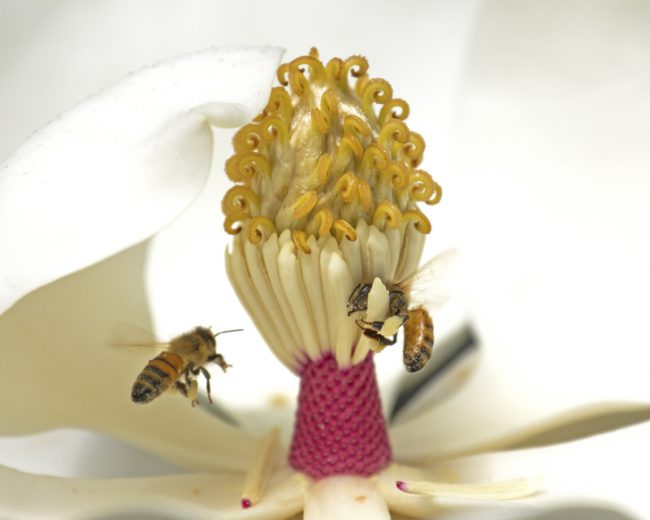Early last month, we wrote about the inspiring news that nine species of humpback whale were being removed from the endangered animal list. Unfortunately, there are still many other animals at risk of extinction, or being lost forever. And a brand new addition has scientists and animals activist particularly worried. This week, seven species of yellow-faced bees from Hawaii were added to the endangered species list. This was joined by the news that the rusty patched bumble bee was also likely to be added very soon. When it happens, this will be the first bee species officially listed as endangered in the continental U.S. (Hawaii is not a part of this area because it is an island).
Scientists have stated that the Hawaiian bee populations have been dropping because of more non-native plants and animals intruding on their habitat (these are living things that were not traditionally found in Hawaii). The bees are struggling to compete with these newer plants and animals. In addition, their habitat is getting smaller due to urban development (this is the building of human cities and structures). Meanwhile, since 1990 the natural range of the rusty patched bumble bee has been getting smaller and smaller. It is now only 8% of what it once was.
Bees an important part of nature
This bee is covered in pollen, which looks like yellow dust. (Getty Embed)
The reason for the extra concern of activists is simple. All animals are important to the ecosystem they live in. But bees are very important. Bees are the main pollinators of many plants. They land on flowers to feed on nectar. In the process, they get pollen stuck on their legs. When the fly to a new flower, some of this pollen falls off. This is how many plants—from wildflowers to crops like alfalfa, blueberries, avocados, almonds, apples, and so many more—reproduce. Without bees? Many of these plants would be in serious trouble. Some might even disappear entirely.
The endangered list can work
Beekeepers have been worried about declining bee populations for many years. Many are concerned that more bee species will soon be added to the endangered list. (Getty Embed)
So this bee situation is serious business. But in the end, it's worth remembering that the endangered species list exists for one very good reason: to protect animals at risk. And if anything, that recent comeback made by humpback whales is proof that it can work! Being on the endangered species list will bring all sorts of extra protections and laws that are designed to increase the size and health of the population of these bees. And that's a great place to start.
 Two Hawaiian honeybees pollinate a flower. Seven species of Hawaiian honeybees have been placed on the endangered species list. (© Rico Leffanta | Dreamstime.com)
Two Hawaiian honeybees pollinate a flower. Seven species of Hawaiian honeybees have been placed on the endangered species list. (© Rico Leffanta | Dreamstime.com)










SAVE THE BEES!!!!
I now it’s Sade
Agre.
Yes we nead to save the bees. I agre.
agre. 🙁 🙁 🙁 😐
😥 😥 😥 😥 😥 😥 😥 SAVE THE BEES
Pour bees we have to save them. ??????????
Yep. 🙁 🙁
🙁 🙁 So sad. Pour bees. Sava male.
🙁 🙁 🙁 🙁 🙁 🙁 🙁 🙁 🙁 🙁 🙁 🙁 🙁 🙁 🙁 🙁 🙁 🙁 🙁 🙁 🙁 🙁 🙁
We need to save the bees ,there dying !
who ever decided to make pestisides 🙄 I’ll see them at court! 😎 😎 💡 😯